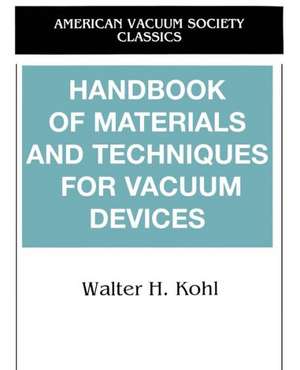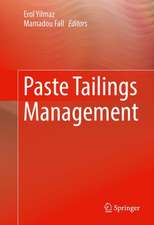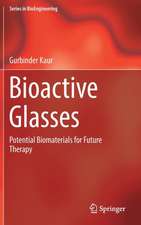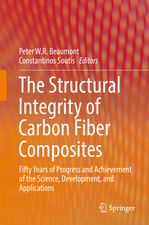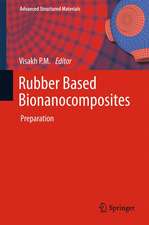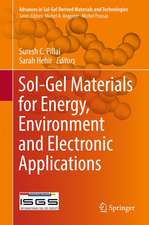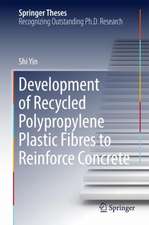Handbook of Materials and Techniques for Vacuum Devices: AVS Classics in Vacuum Science and Technology
Autor Walter Kohlen Limba Engleză Paperback – 8 mai 1997
Preț: 963.43 lei
Preț vechi: 1174.91 lei
-18% Nou
Puncte Express: 1445
Preț estimativ în valută:
184.41€ • 200.38$ • 155.01£
184.41€ • 200.38$ • 155.01£
Carte tipărită la comandă
Livrare economică 21 aprilie-05 mai
Preluare comenzi: 021 569.72.76
Specificații
ISBN-13: 9781563963872
ISBN-10: 1563963876
Pagini: 648
Ilustrații: XIII, 623 p.
Dimensiuni: 191 x 235 x 34 mm
Greutate: 1.12 kg
Ediția:1995
Editura: American Inst. of Physics
Colecția American Institute of Physics
Seria AVS Classics in Vacuum Science and Technology
Locul publicării:Melville, NY, United States
ISBN-10: 1563963876
Pagini: 648
Ilustrații: XIII, 623 p.
Dimensiuni: 191 x 235 x 34 mm
Greutate: 1.12 kg
Ediția:1995
Editura: American Inst. of Physics
Colecția American Institute of Physics
Seria AVS Classics in Vacuum Science and Technology
Locul publicării:Melville, NY, United States
Public țintă
ResearchCuprins
Contents: 1. Glass. 2. Ceramics. 3. Mica. 4. Carbon and Graphite. 5. Iron and Steel. 6. Copper and Copper Alloys. 7. Nickel and Nickel Alloys. 8. Precious Metals and Their Alloys. Introduction to Refractory Metals (RM). 9. Tungsten and Tungsten Alloys. 10. Molybdenum and Molybdenum Alloys. 11. Tantalum and Columbium (Niobium) and their Alloys. 12. Titanium, Zirconium, and Hafnium and their alloys. Introduction to Joining Processes. 13. Soldering and Brazing. 14. Glass-to-Metal Sealing. 15. Ceramic-to-Metal Sealing. 16. Cathodes and Heaters. 17. Grid Structures and Coatings. 18. Getter Materials. 19. Secondary Emission. 20. Voltage Breakdown.
